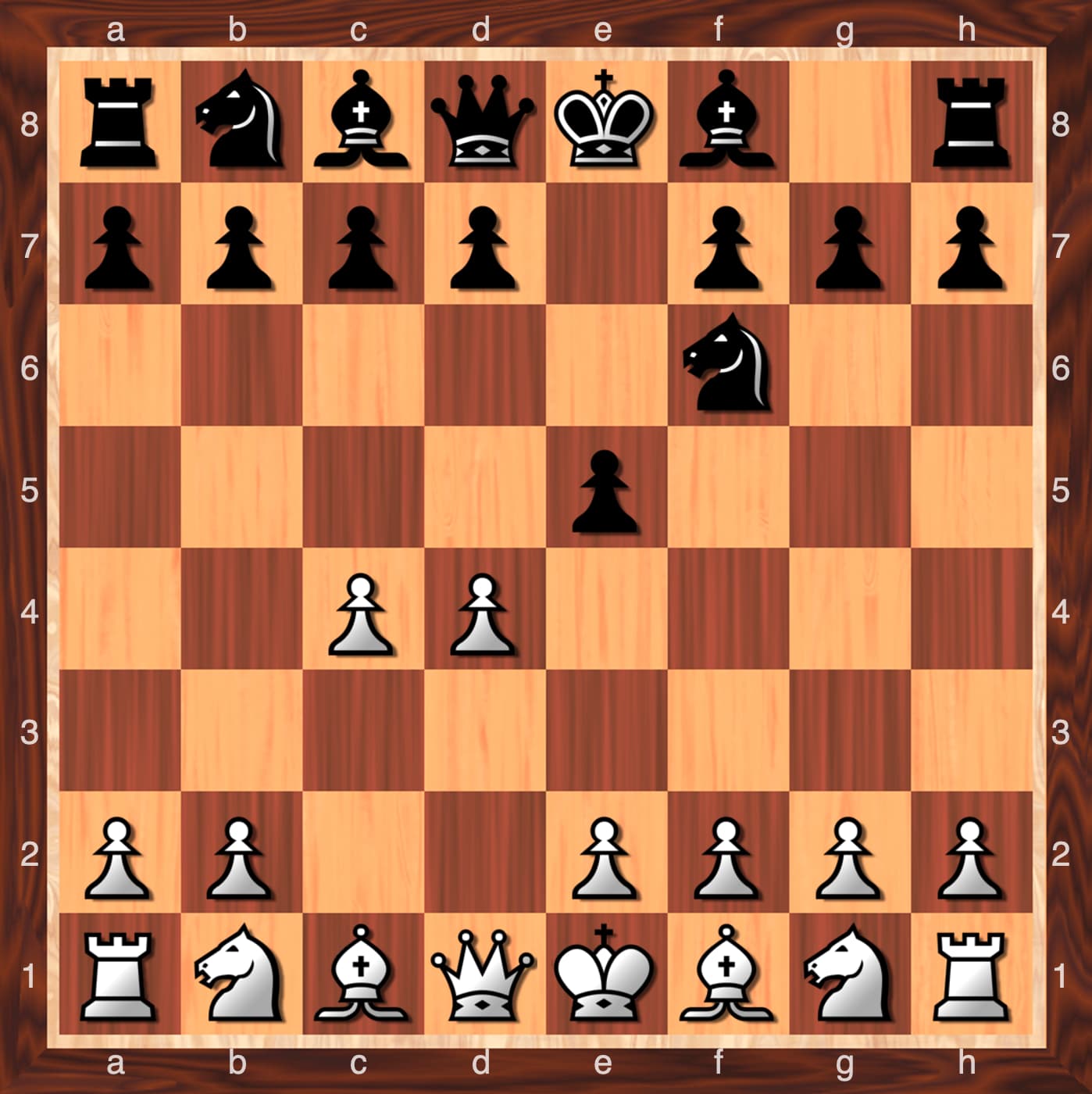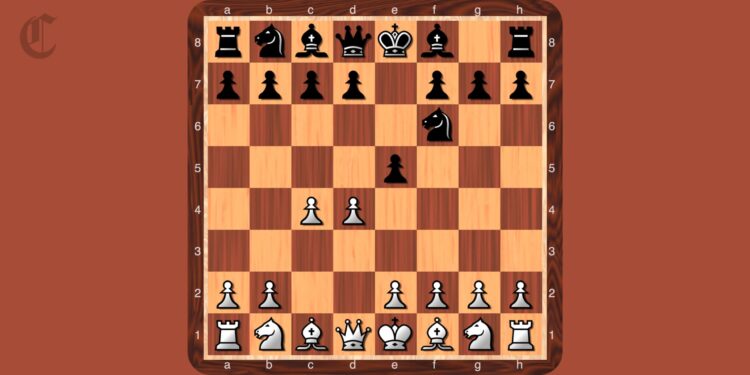1. d4 Nf6 2. c4 e5

The Budapest Gambit, also called the Budapest Defense, is a d4 opening primarily for the Black pieces. It can also be played with White, as you’ll see in examples below.
The Budapest Gambit contains one of the most famous traps players can fall into as well, called the Kieninger Trap. For more information on this trap, you can read the guide dedicated to the Kieninger Trap.
Main Line
Here’s how you play the main line of the Budapest Gambit.
White plays d4. Black plays Nf6. All routine. White plays c4 and Black puts the Budapest Gambit on the board with e5, giving up the pawn.
Origins
The first recorded game was Adler vs Geza Maroczy in 1896, Budapest (hence the name Budapest Gambit). Adler played what is now called the Adler Variation, named after Adler, of the Budapest Defense.
Examples
Example #1
This example is a game where Black plays the Budapest Gambit and wins the game.
The following two games are examples of White being able to combat the Budapest and win the game.
Example #2
This example is a game between legendary Grandmaster Anatoly Karpov and Nigel Short. Nigel plays the Budapest but Karpov is able to take the victory.
Example #3
Another victory for White playing against the Budapest.
Frequently Asked Questions
Is the Budapest Gambit good?
The Budapest Gambit isn’t a great opening for professional Chess players. For beginners, it’s a good gambit to play simply because your opponent won’t know the main line and won’t know how to avoid the traps in the Budapest. But you will rarely see the Budapest Defense played in Grandmaster games.
Why is it called Budapest Gambit?
The exact origins of the Budapest Gambit (Defense) are unknown. However, the first record of the Budapest Gambit being played was in 1896 between Adler and Geza Maroczy in Budapest, which is where the name Budapest Defense came from.
Conclusion
To recap, the Budapest Gambit can be a fun opening to play because of the Kieninger Trap. However, you won’t see the Budapest Defence being played in Chess tournaments because White has to not know the main lines of the Budapest in order for Black to implement any traps.
I hope this tutorial on the Budapest Gambit helped you. If you liked this opening, you may like other Chess Gambits like the Scotch Gambit and the Evans Gambit.


